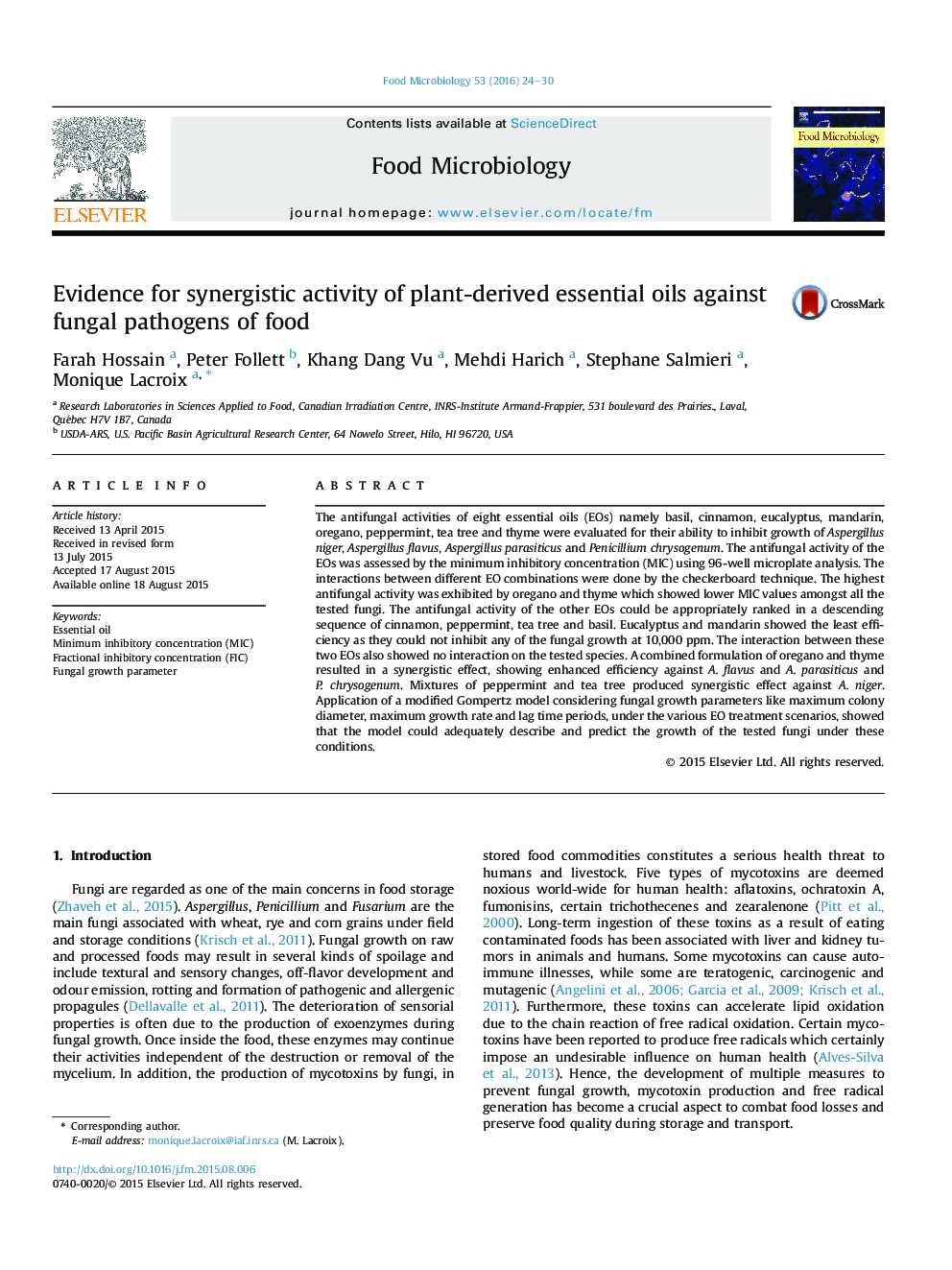| کد مقاله | کد نشریه | سال انتشار | مقاله انگلیسی | نسخه تمام متن |
|---|---|---|---|---|
| 4362665 | 1301507 | 2016 | 7 صفحه PDF | دانلود رایگان |
• The present research highlights the potential antifungal effects of eight EOs against four mold species.
• The possible synergistic effects between EO combinations, in view of inducing enhanced effects.
• Antifungal activities of the volatile components resulting from the EOs to better understand the inhibitory kinetics.
• Application of the modified Gompertz model provided valuable insights on fungal growth parameters.
The antifungal activities of eight essential oils (EOs) namely basil, cinnamon, eucalyptus, mandarin, oregano, peppermint, tea tree and thyme were evaluated for their ability to inhibit growth of Aspergillus niger, Aspergillus flavus, Aspergillus parasiticus and Penicillium chrysogenum. The antifungal activity of the EOs was assessed by the minimum inhibitory concentration (MIC) using 96-well microplate analysis. The interactions between different EO combinations were done by the checkerboard technique. The highest antifungal activity was exhibited by oregano and thyme which showed lower MIC values amongst all the tested fungi. The antifungal activity of the other EOs could be appropriately ranked in a descending sequence of cinnamon, peppermint, tea tree and basil. Eucalyptus and mandarin showed the least efficiency as they could not inhibit any of the fungal growth at 10,000 ppm. The interaction between these two EOs also showed no interaction on the tested species. A combined formulation of oregano and thyme resulted in a synergistic effect, showing enhanced efficiency against A. flavus and A. parasiticus and P. chrysogenum. Mixtures of peppermint and tea tree produced synergistic effect against A. niger. Application of a modified Gompertz model considering fungal growth parameters like maximum colony diameter, maximum growth rate and lag time periods, under the various EO treatment scenarios, showed that the model could adequately describe and predict the growth of the tested fungi under these conditions.
Journal: Food Microbiology - Volume 53, Part B, February 2016, Pages 24–30
